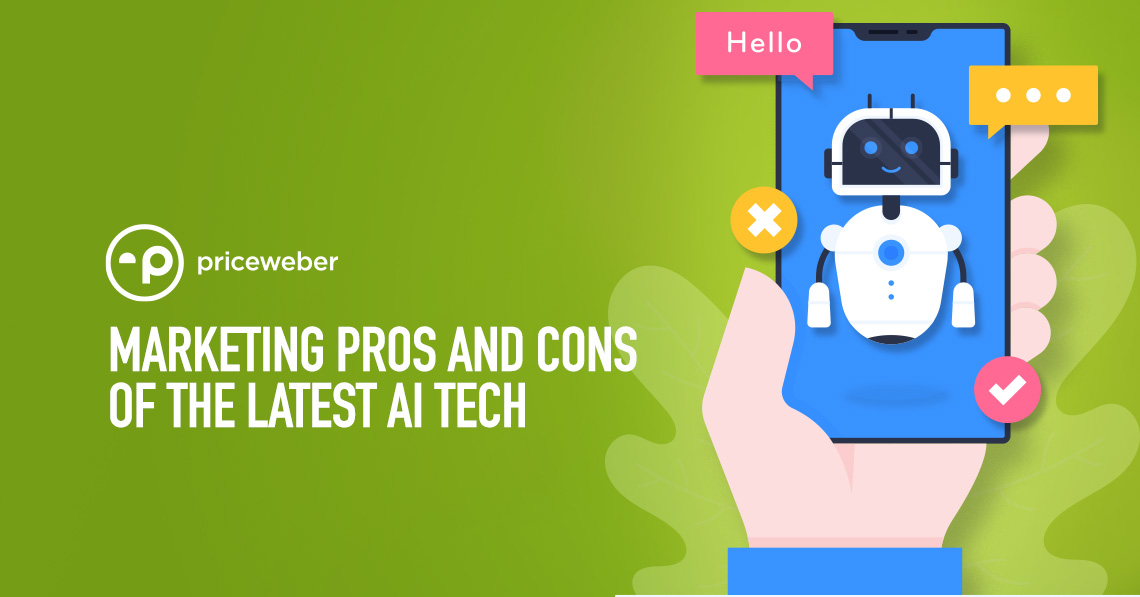Just about the only person in the world who hasn’t heard of ChatGPT, GPT-4, or OpenAI is this woman who quite literally has been living under a rock for the last 500 days, having spent that amount of time in a cave! Depending on whom you are listening to, artificial intelligence (AI) is either going to put you out of a job, make you millions (if you follow some simple 10-step plan), or is the start of a technology apocalypse. In today’s Plain Talk, we’ll address the worries and excitement head-on and tell you what you need to know about today’s AI tools.
It’s a challenge to keep up
First, let’s acknowledge that the AI ecosystem seems to be growing exponentially. New products, versions and features of established tools are released almost daily. Social media is filled with AI proponents extolling its virtues and detractors advocating for either ignoring AI or pushing for a government ban. But through all the noise, some exciting or at least really interesting things are happening in this technology space if you know how to use the tools.
How does ChatGPT work?
For the uninformed or underinformed, GPT-4 from OpenAI is one of the latest iterations of AI, or to be more correct, large language model-trained machine learning interfaces or “LLMs.” The premise is simple. Type your question into the GPT-4 interface much like you’d ask a colleague and get back an answer in humanlike phrasing. GPT-4 has grown into a platform that allows other companies to do integrations to build their own products. They also have a robust plug-in system allowing multiple input and output options.
What do LLMs mean for digital marketers?
In a way, this isn’t new. Access to easier-to-use tools has already lowered the price and opportunity cost of systems that previously may have required a big IT department. For example, WordPress, Squarespace, and Wix have made it easier than ever to create websites that work across all devices. Salesforce, HubSpot and ActiveCampaign make it simple to track, engage with and customize customer experiences. Even mobile apps, previously only within reach of brands with deep pockets or in-house teams, are succumbing to the low-code movement. With all the great existing tools, should you be considering AI and LLM technology in your marketing mix? As cliché as it sounds … it depends! As one of the first marketing agencies in the Midwest to build a commercial website (way back in 1994), PriceWeber has evaluated thousands of tools and technologies for clients. Rather than make sweeping statements that may or may not be true for every situation, we’ve instead listed three things we’re worried about and three things we’re excited about with AI technology.
What we’re worried about
Effort/Value
It’s true GPT-4 and other AI-powered tools can do incredible things. What the short-form videos we’re all seeing don’t show is the hours of trial and error it probably took to find the exact right queries to get those amazing results. Additionally, once GPT-4 produces the desired results, a subject expert still has to verify that they are correct. ChatGPT has been shown to generate believable but fake references, and just like half the fake Benjamin Franklin quotes on the Internet, they sound really plausible! As digital marketers, it is tempting to assume that these tools will be a timesaver or that we’ll know when the correct solution has been returned. Still, time needs to be allocated for a knowledgeable subject expert to verify AI’s output.
Upstream Strategy
This may seem like a no-brainer, but having a cohesive marketing strategy that is designed to meet your objectives is critical to success. Jumping right to specific digital tools because AI-powered technology is trendy or lets you do it faster/cheaper may not get you the return on investment you think it will. Additionally, marketing strategy and specifically what tools/approaches to use often is discovered over a period using trial and error with good analytics tracking. So, if you are interested in integrating AI tech into your mix, build a testing structure to measure impact.
Model Integrity
GPT-4 and other tools like it are “trained” on a human-selected dataset. What biases are being introduced or will be introduced in this way? Beyond truly nefarious biases such as racist or misogynistic responses, will a corporation elevate answers that use its tools over competitors? What about other actors who figure out ways to game the system? Like the early days of SEO, once the internal workings of the training datasets become more well-known, AI optimization will become a big thing.
What we’re excited about
Automation
There is no doubt that GPT-4 and other AI-powered tools can help automate tasks that would otherwise require significant time or even additional staffing. There are AI-powered tools to translate copy into other languages, generate captions for videos, write SEO content, summarize unstructured data, and much more. With a little know-how, you can leverage GPT-4 for many of your more mundane tasks. Initially, ChatGPT only provided responses in a chat-like web interface, and users would have to copy and paste the responses wherever needed. With OpenAI’s new plugin platform, tools like Zapier can be used to build a workflow with ChatGPT responses. You could create an article on your website with the response from ChatGPT and Zapier actions; even more powerful would be to ask ChatGPT to write many various articles based on a topic and keyword data and automatically publish them to your website. AI-based tools really shine with structured, repetitive tasks like this and will only get better with time. We, however, do not recommend this for two reasons:
- AI does not provide “Helpful Content” – It does not create expert opinions or unique perspectives that Google values.
- While Google does not yet blackhole or devalue AI-generated content, we believe it is probable that they will. They can identify AI-generated content, and AI can/will lead to false expertise.
User Research
One particularly exciting possibility recently introduced with GPT-4 is the ability to send additional data to be utilized when asking questions. In theory, you could load up transcripts from focus group interviews or survey data and ask your “target audience” questions that weren’t originally asked. AI-powered tools are great at consuming and making sense of unstructured data. One caveat is that most AI tools have a static base model, meaning it doesn’t change often. With some tools, you can feed the model extra contextual data, but this option is provided at a premium. ChatGPT, for example, charges by the word. As the AI ecosystem expands, it’s clear that centralized commercial models aren’t the only option; many other models have been released that can be run on your computer where additional costs are not a factor. However, localized models require much more technical knowledge to implement, aren’t as powerful and are still very new.
Ideation
For us, the true power of ChatGPT and other AI-powered tools is the ability to provide users with a starting point. For a web developer looking for how to build a new feature, ChatGPT or GitHub Copilot might not give them the exact solution, but it would provide them with a starting point and shave a few hours off the overall work. A designer might use Midjourney or DALL·E to generate some concept art based on the objective of a campaign brief. The same goes for copywriters or content creators, where many AI-powered tools can give them a starting point that can later be polished or perfected “by hand.” Makers of popular tools in digital marketing, such as Adobe (Photoshop and Premiere) and Canva, have taken note and started to integrate AI into their tools, allowing creators to generate artwork or even music and sound effects. This will continue and likely become mainstream, and quality will improve.
Conclusion
GPT-4 and other AI-powered tools are exciting new technologies that will, without a doubt, make a lasting impact on digital marketing. However, proceed with caution and evaluate options against your overall strategy to ensure the value justifies the effort. ChatGPT, arguably the product that started the current focus on AI, was released in November 2022, and since then, hundreds of products have been launched, and dozens of significant advancements in AI technology have occurred. In the long term, we believe that standalone AI tools like GPT-4 will not be a frontline tool for most marketers; instead, new and existing commercial products will integrate AI technology to solve specific challenges. Keep watching for AI features to be released in your existing tools.
If you need guidance on how to best implement AI into your digital marketing, drop us a note or call us at 502-499-4209. Our team is here to answer any questions you have.



